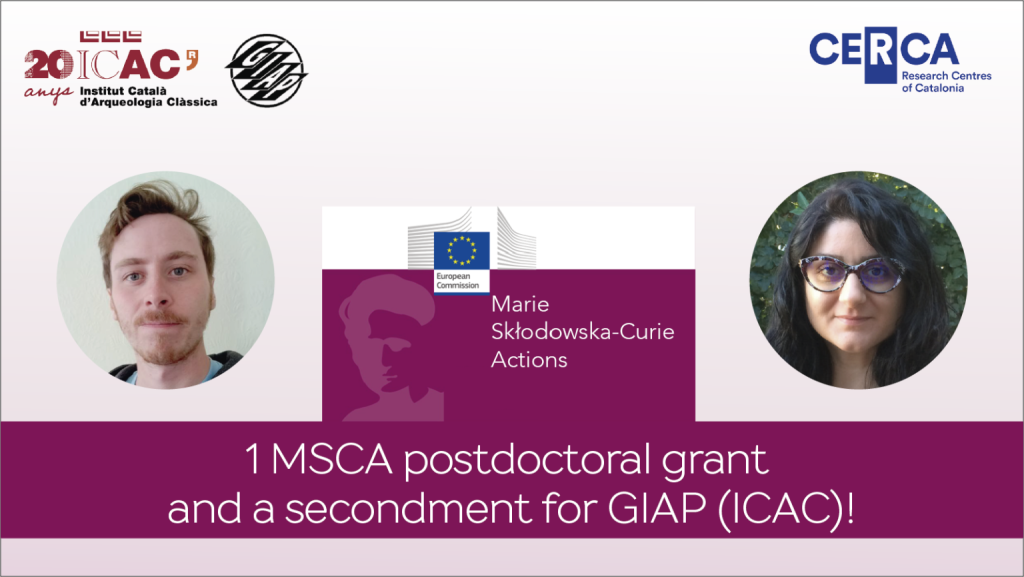
Great news for GIAP (ICAC) in the last Marie Skłodowska-Curie Actions (MSCA) call from the European Union!
The computational team will expand with a new project that aims at reconstructing the Roman transport network.
We also congratulate our colleagues in Institut des Sciences de l’Évolution – Montpellier (ISEM UMR 5554) for being awarded an MSCA that included a secondment in GIAP during the project.
 Archaeologist Andrew McLean has conceived the project entitled “Reconstructing Roman Road Network para un desarrollo de Urban development (R3NUrb)”, which will be supervised at the ICAC by Dr Héctor A. Orengo (ICREA-ICAC) and Dr Alexandra Livarda (Ramón y Cajal researcher at the GIAP).
Archaeologist Andrew McLean has conceived the project entitled “Reconstructing Roman Road Network para un desarrollo de Urban development (R3NUrb)”, which will be supervised at the ICAC by Dr Héctor A. Orengo (ICREA-ICAC) and Dr Alexandra Livarda (Ramón y Cajal researcher at the GIAP).
Dr. Andrew McLean completed his PhD in the University of Edimburgh, where he has been affiliate at the School of History, Classics and Archaeology. His research interests mainly focused on the economy of the Roman Adriatic.
His methodological approaches include GIS and statistical analysis, particularly expanding on traditional Least Cost Path (LCP) analysis by using circuit theory to model maritime movement. Through this he is familiar with QGIS, R, Circuitscape, shell scripting and programming languages such as Julia and Python.
Here goes an introduction to the R3NUrb project:
The Roman conquest, occupation and dominion over a large part of current Europe and beyond marked a strong change in social, cultural and economic patterns in the area. Two of the most important and lasting changes were the establishment of a new transport network and the large-scale development of cities.
Connectivity continues to be seen as an essential factor in the analysis of the spread of urbanisation, migration, the ancient economy, and the transmission of ideas. In Antiquity connectivity could only be achieved via movement by land, river and sea, and had to rely on the available transport network.
However, to date, no analysis of communication, trade, distribution of people and resources, or the economy in general, exists that actively considers the transport network, the single element that made connectivity possible, on an Empire-wide scale and therefore no attempts have been made to understand its influence on urbanism or its long-term influence.
This is largely due to the lack of complete reconstructions of Roman route systems. Although much is known about the roads and other elements of the Roman transport network, this knowledge is partial and lacks integration. The road transport network is full of empty spaces and broken links that prevent the development of an integrated system fit for large-scale analyses and the use of quantitative and computational approaches.
R3NUrb will address these problems by reconstructing the whole Roman transport network and using it to analyse the influence of connectivity on the process of urbanisation, urban distribution and the long term success of urban centres.
For this R3NUrb will employ an innovative combination of computational approaches, remote sensing, network science, and geostatistics. This approach will provide unique insights into mobility, transport and urbanisation at a pan-Roman scale and, therefore, open up new horizons in the study of connectivity and urbanism in the past.
Original posted at GIAP website, here
Funded by the European Union. Views and opinions expressed are however those of the author(s) only and do not necessarily reflect those of the European Union. Neither the European Union nor the granting authority can be held responsible for them. 






